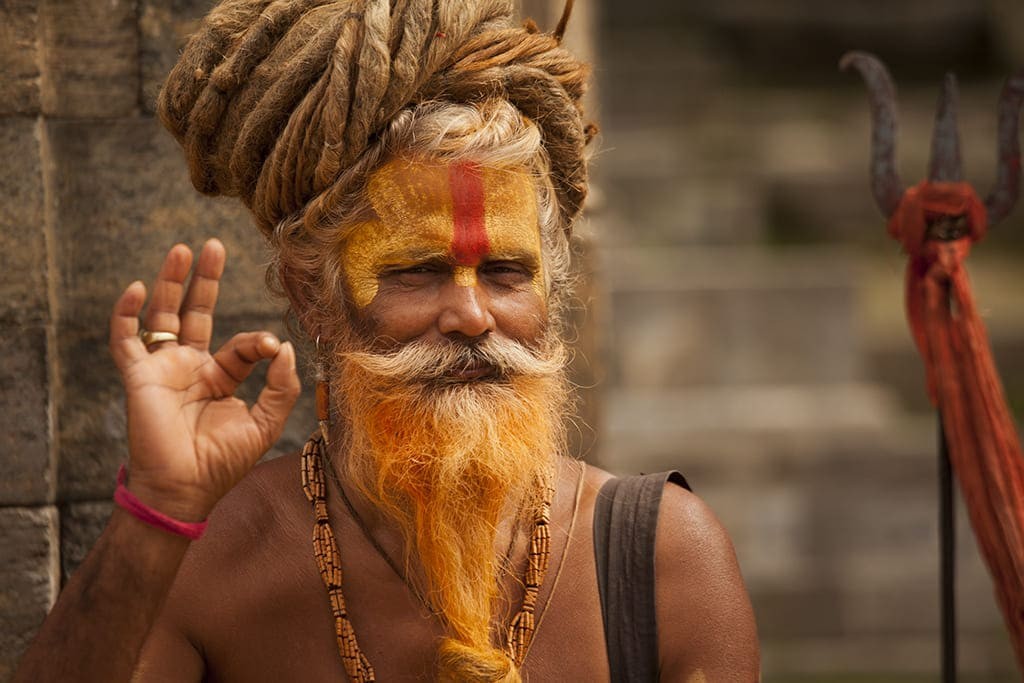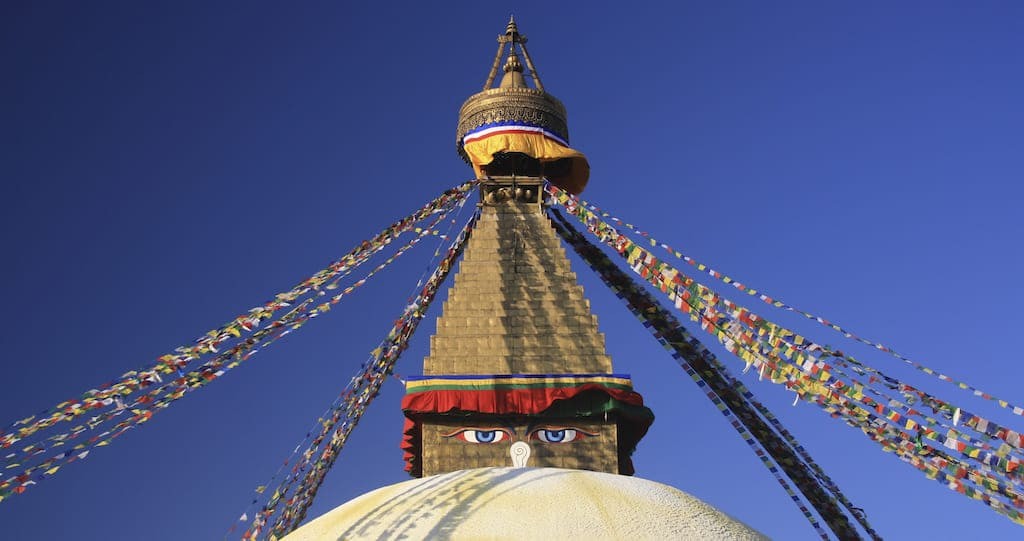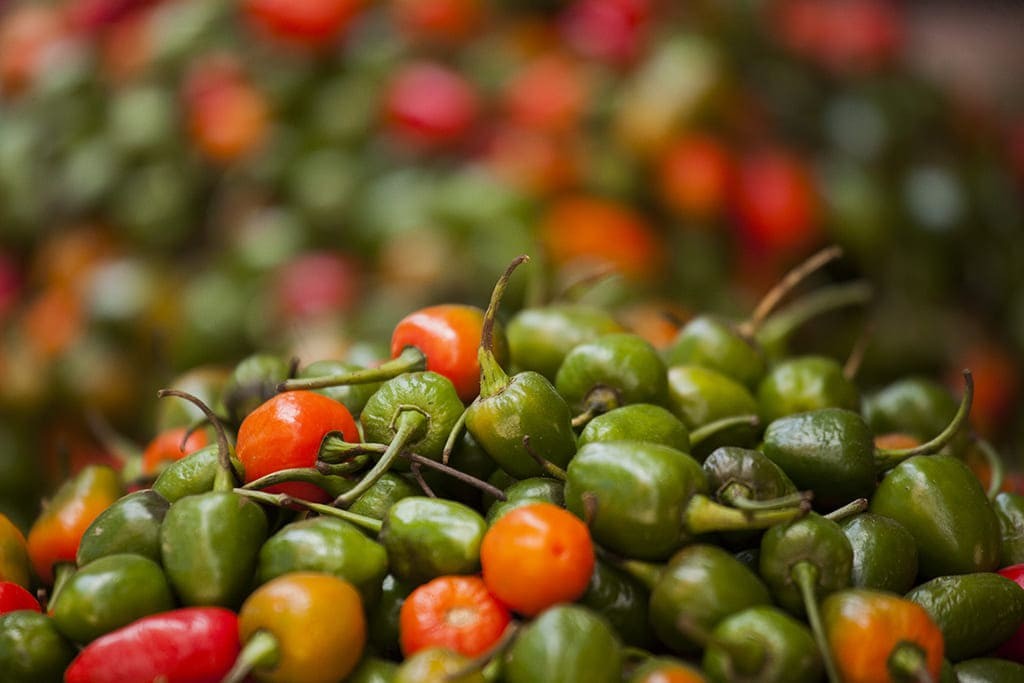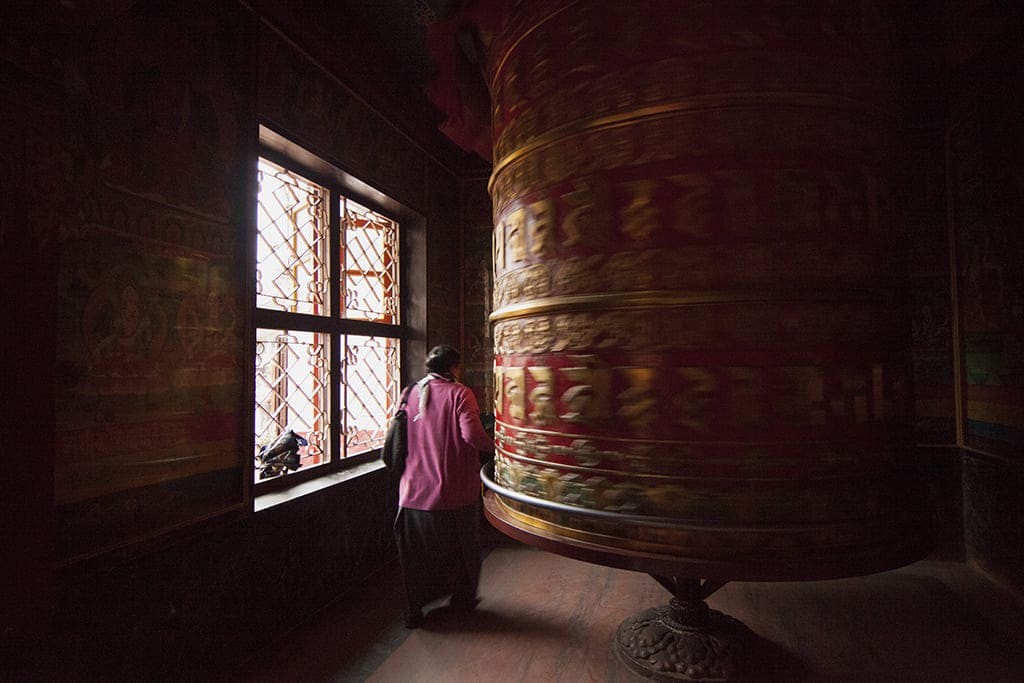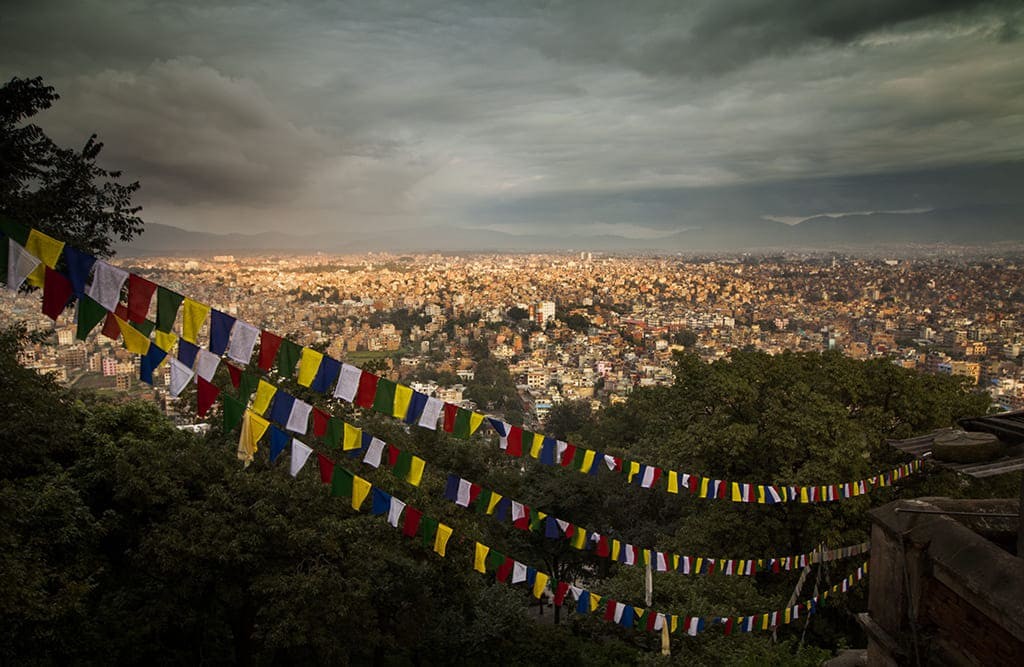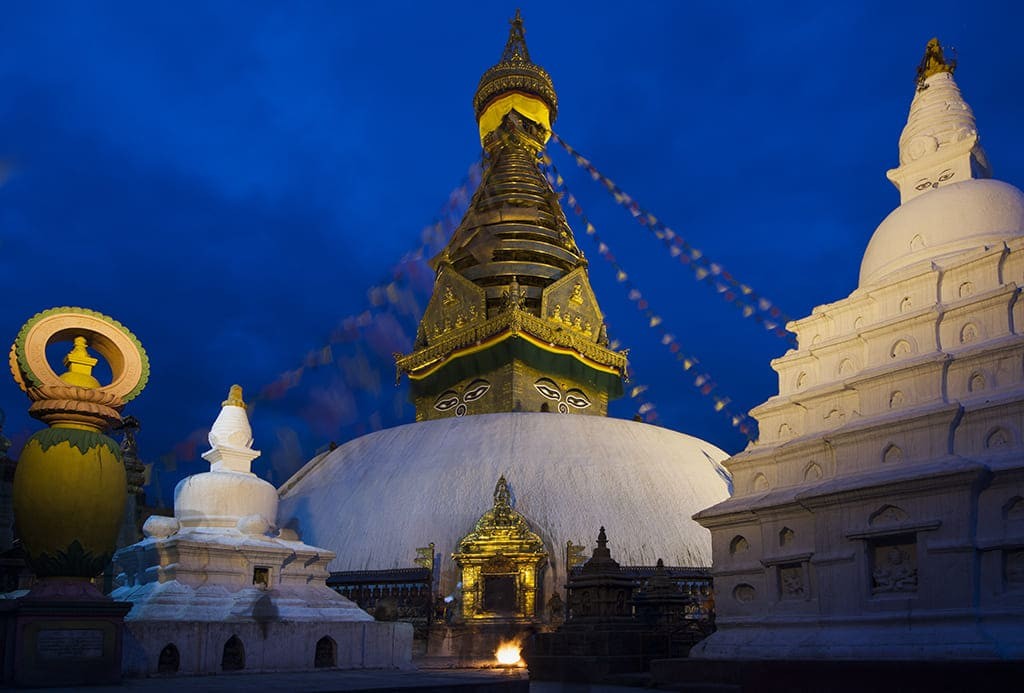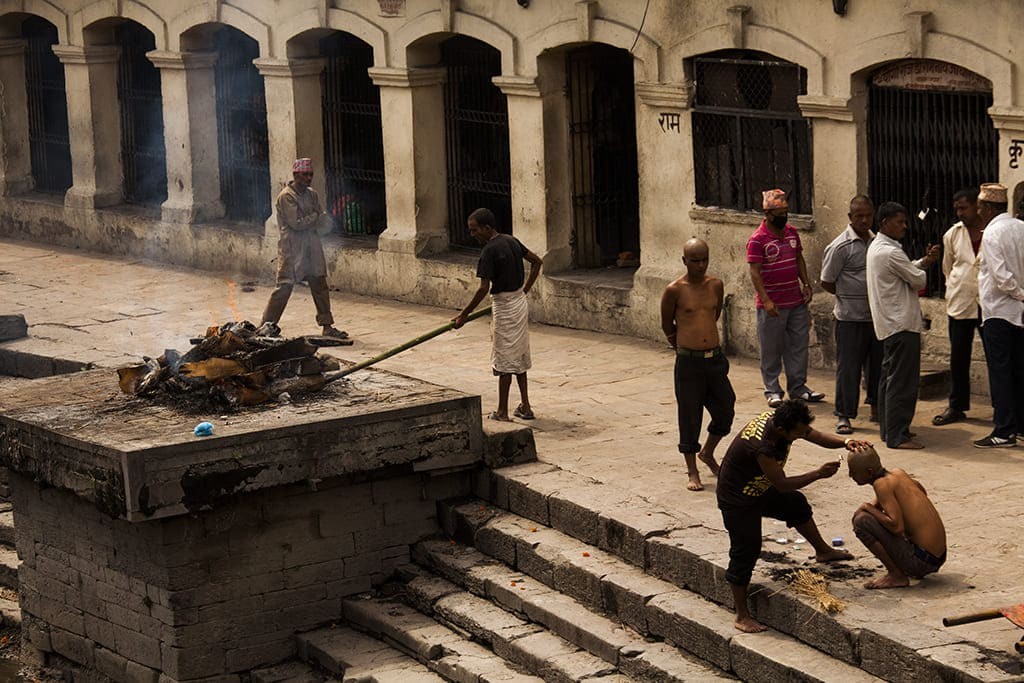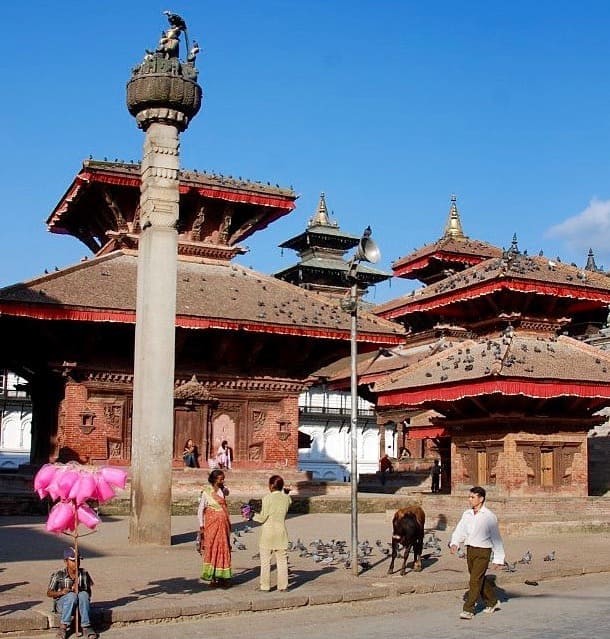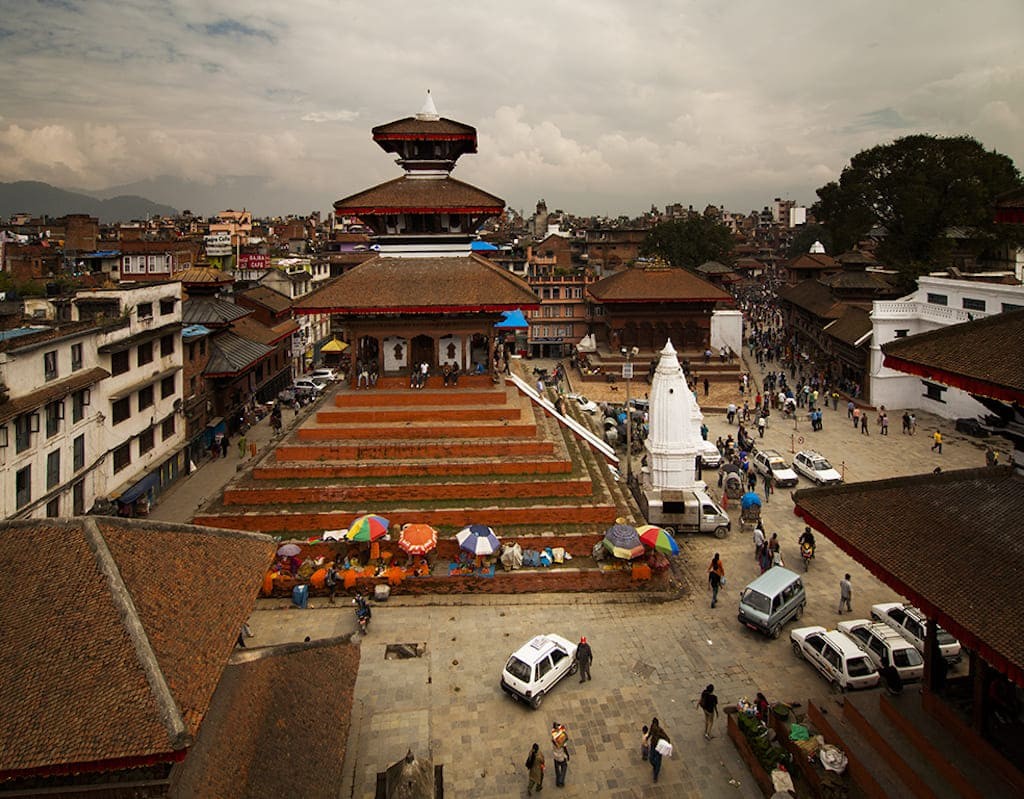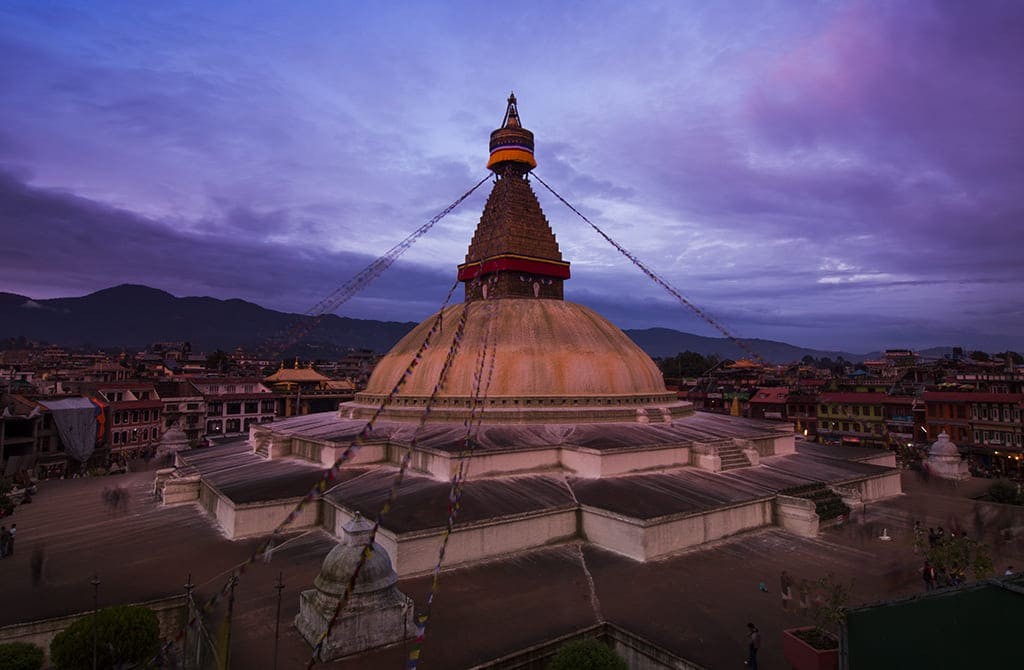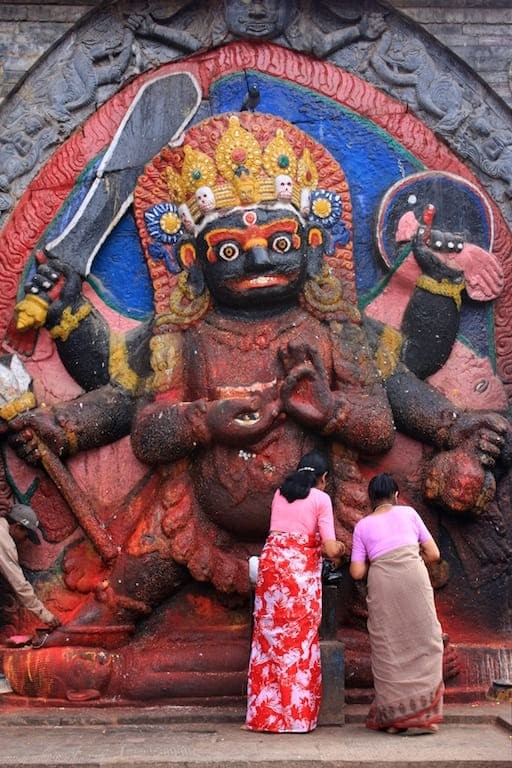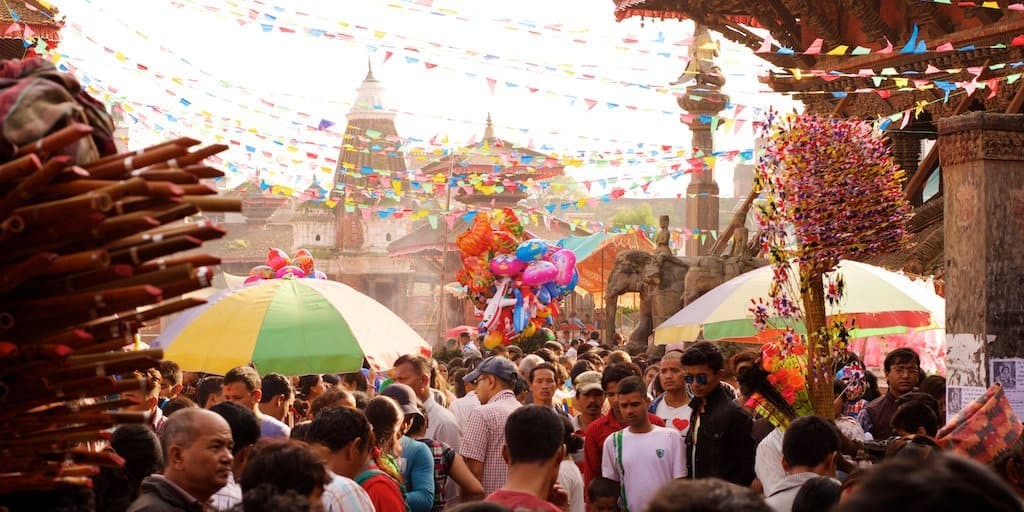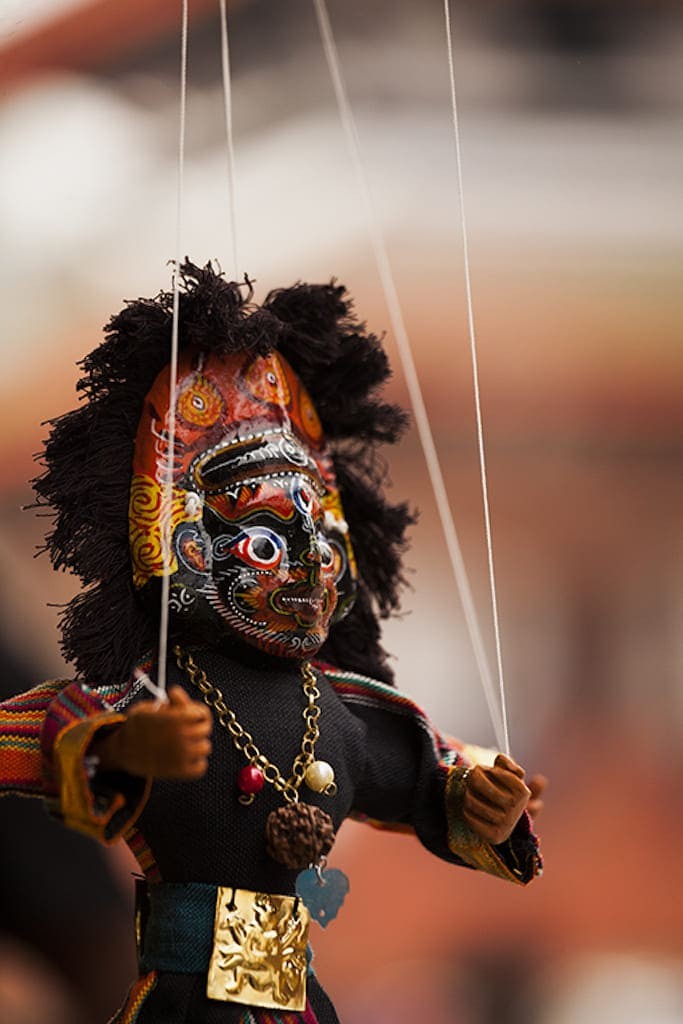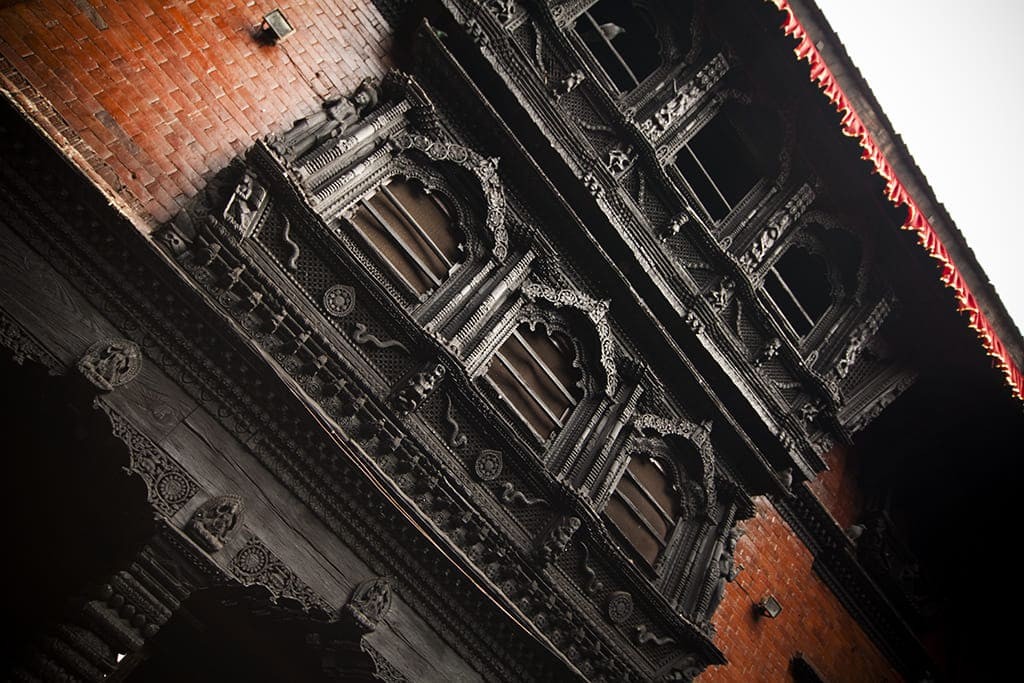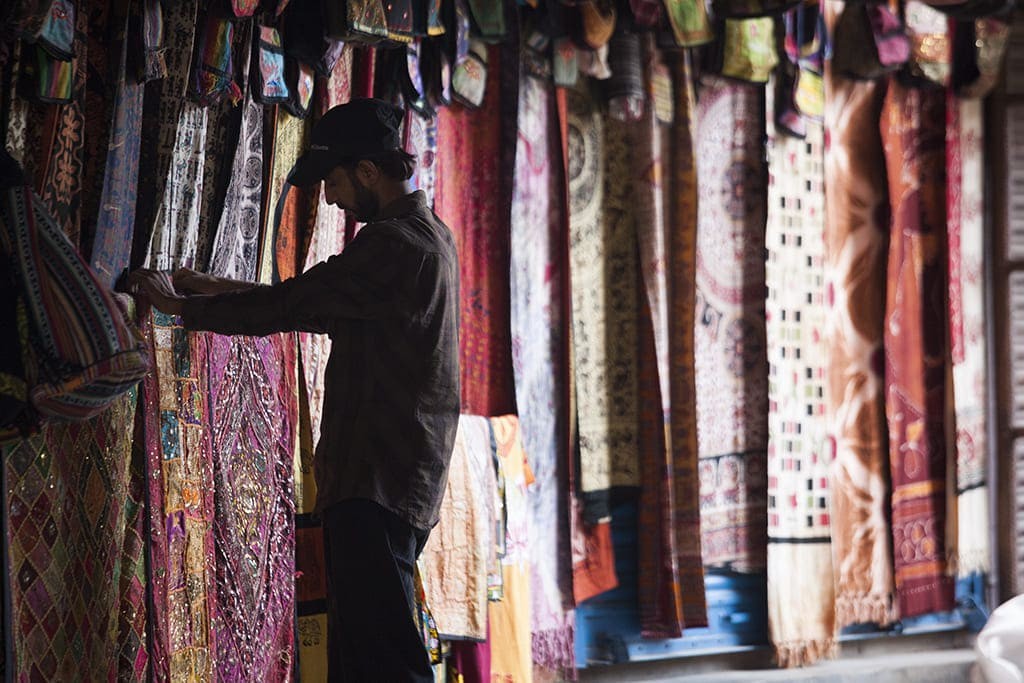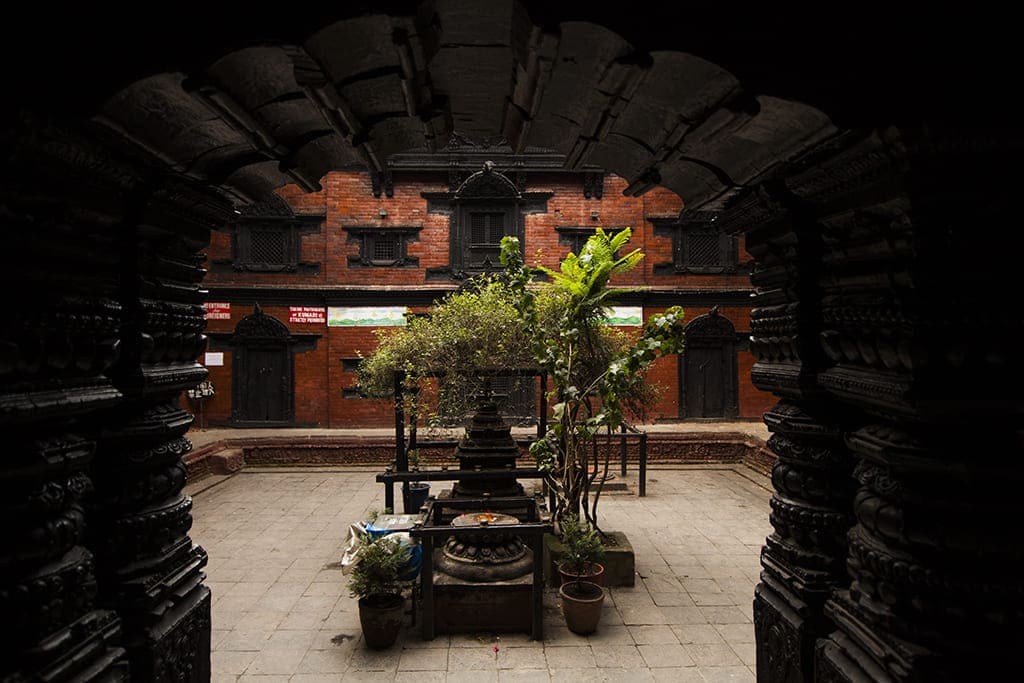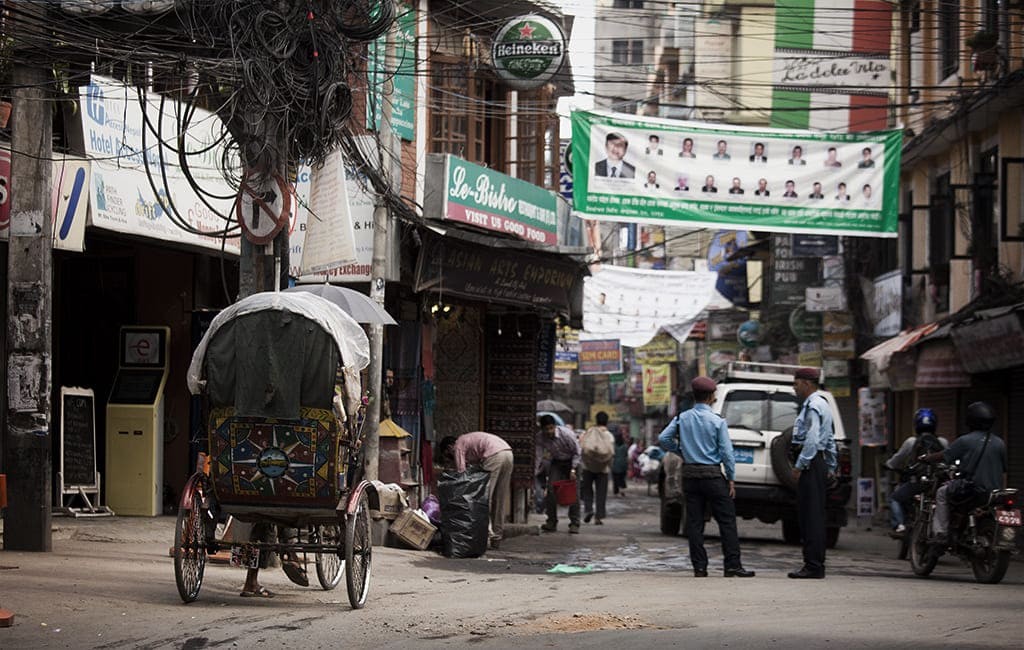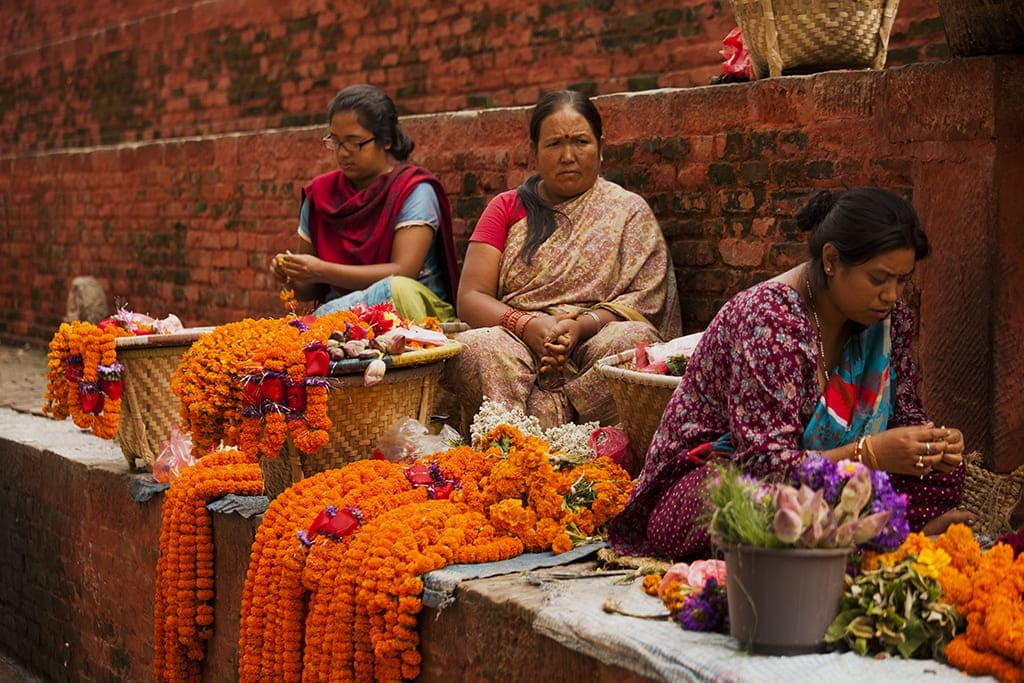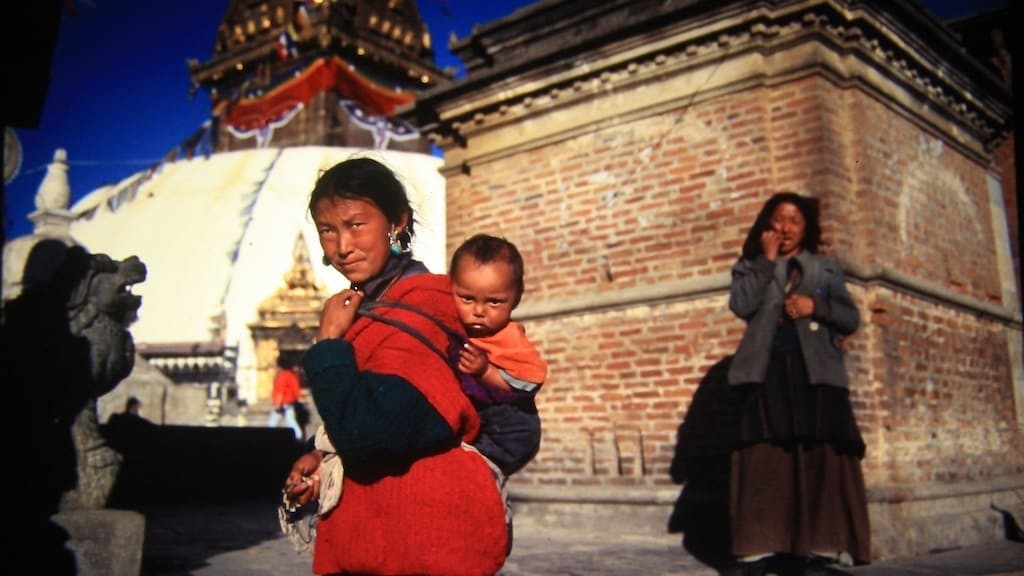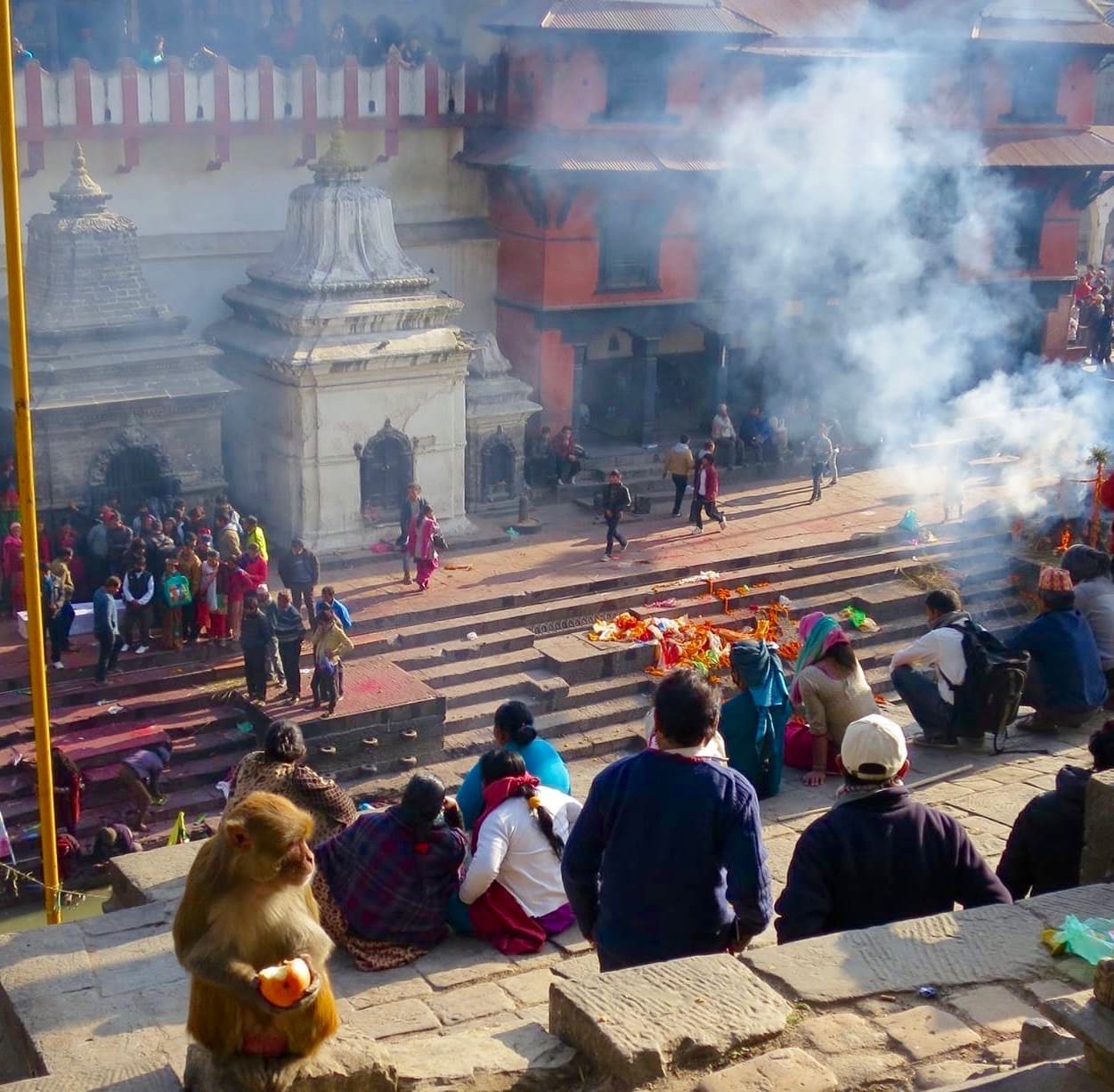You can contact us by e-mail or phone
from uk
01405 862917
outside uk
+44 1405 862917
01405 862917
+44 1405 862917
Kathmandu
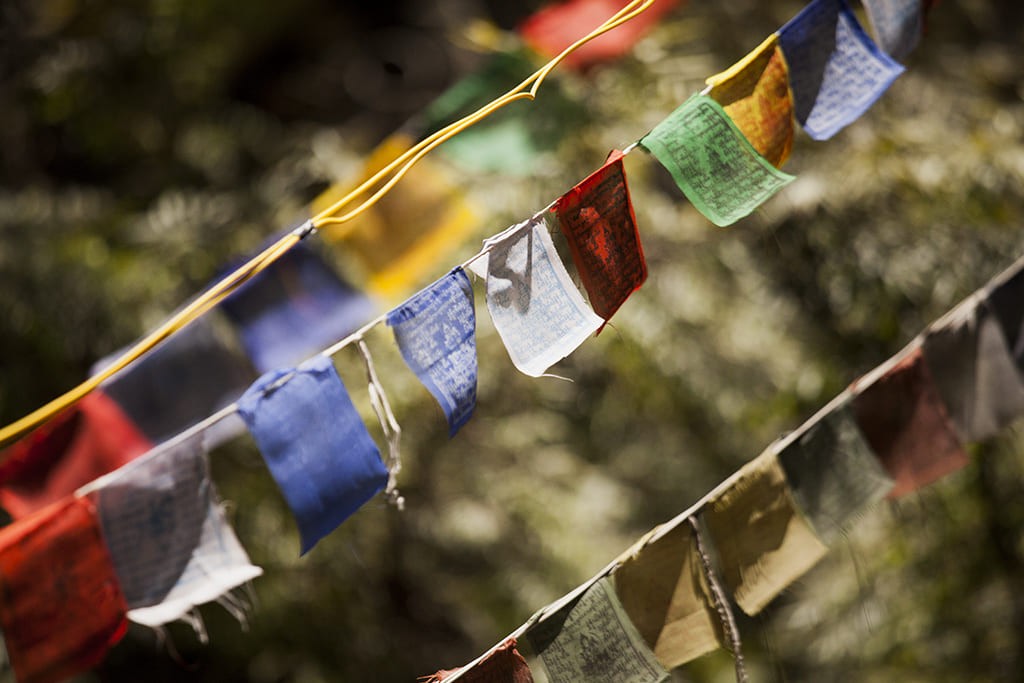
Kathmandu
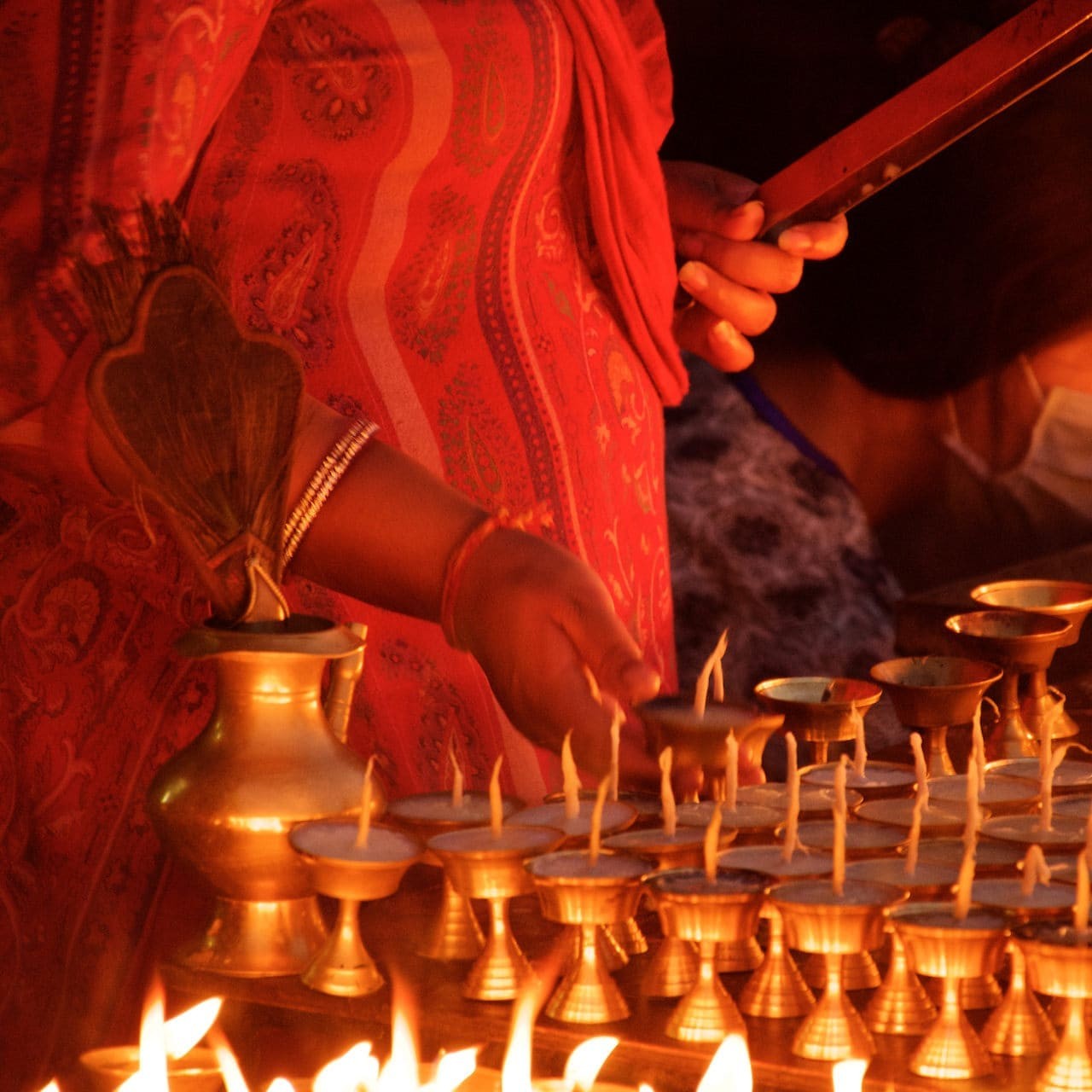
Our capital city just gets bigger and bigger. A seething mass of humanity and everything that goes with that. Colourful, chaotic, alive, aromatic—Kathmandu is an assault on the senses.
Kathmandu still retains buildings with ornate, carved wooden Newari windows (just look up), hidden temples, fascinating local street markets, Buddhist stupas, and the soaring pagodas of Durbar Square. To many, Kathmandu is a bit like Glastonbury Festival gone mad sometimes.
For shopping, we highly recommend Pilgrim's Book House in Thamel. Most of the large range of goods for sale are of higher quality and have fixed prices.
What to see in Kathmandu
The "Big Four"
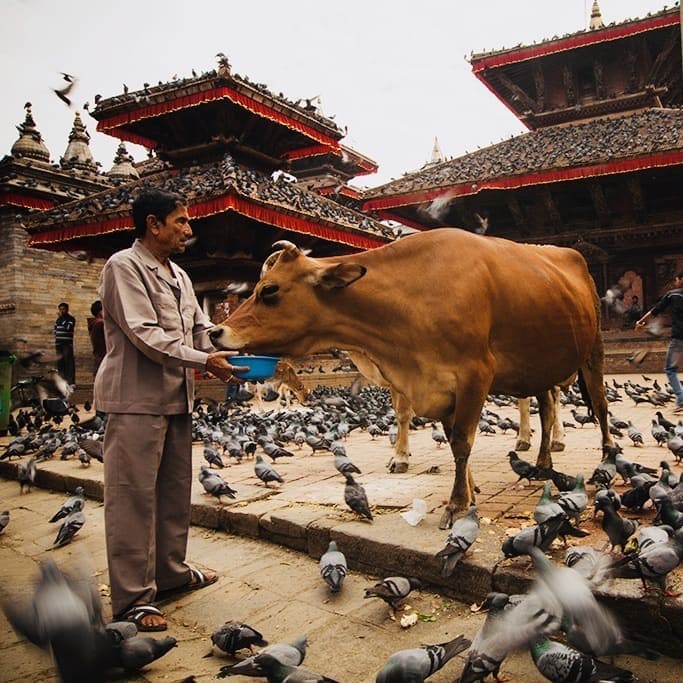
Durbar Square
Dominated by the Hanuman Dhoka Durbar (or Hanuman Palace) and flanked by a statue of the monkey god Hanuman, there are also erotic carvings to discover on the Jagannath Mandir in the north of this UNESCO World Heritage Site. Study the Kala Bhairav, and you'll see Shiva portrayed as a fierce god, replete with a garland of skulls, eight arms carrying six swords, as well as an axe and a shield. In the north-east corner of Durbar Square is the amazing three-tiered, gilded Taleju Mandir, the largest temple in Kathmandu.
Needless to say, the Durbar Square is usually very busy with tourists during the day and is probably what most first-time visitors to Nepal imagine Kathmandu to be like; however, most people's "ideal Kathmandu" isn't actually Kathmandu but the neighbouring (and much smaller) city of mediaeval Bhaktapur.
That aside, the Durbar Square in Kathmandu is a truly magnificent sight and definitely worth a visit. There are actually over 50 temples and ancient monuments. Look out for the Kasthamandap (House of Wood), which dates from the 12th Century and is the original "centre" of Kathmandu.
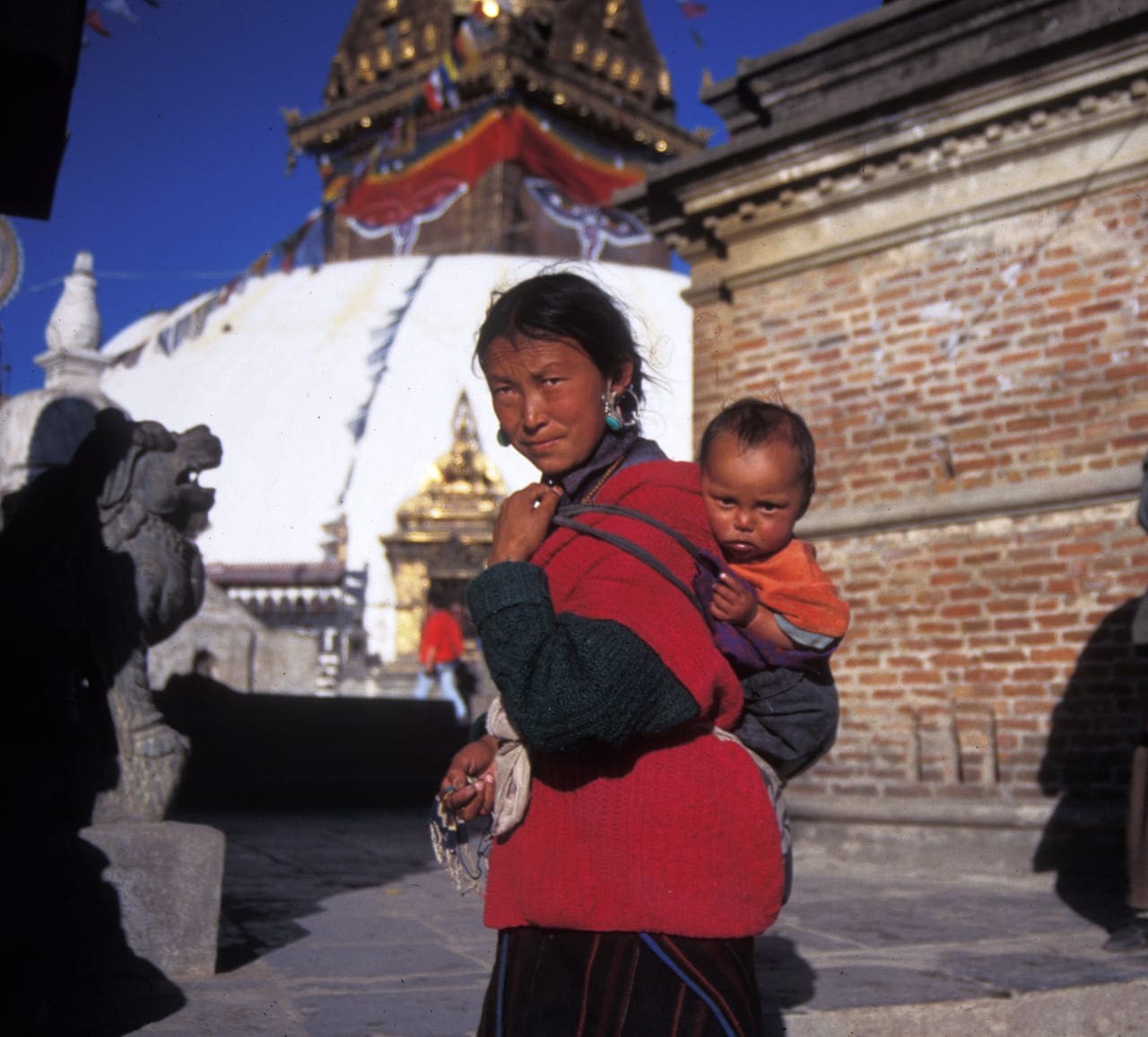
Swayambunath
Perhaps better known as the "Monkey Temple", this ancient Stupa sits on top of a hill on the outskirts of Kathmandu. The original site dates back over 2,500 years and marks the place where Manjushri discovered the lotus of the valley lake. It's believed that the entire Kathmadu Valley was, in fact, a huge lake at one time. The best way to approach Swayambunath is to walk up the stone steps and through the woodland. Look in the trees, and you might see Kites. Of course, as you reach the stupa, you won't be able to miss the monkeys (Rhesus macaques); they are everywhere, literally!
As well as the main Stupa, there are statues of Buddha, Ganga, and Jumana, masterpieces of Newari bronze art. On clear days, there are great views from up here across the sprawling city and the entire Kathmandu Valley, as well as tantalising glimpses of the Himalayas.
If you need a little peace, pop into the nearby gompa or retreat to one of the nearby cafes.
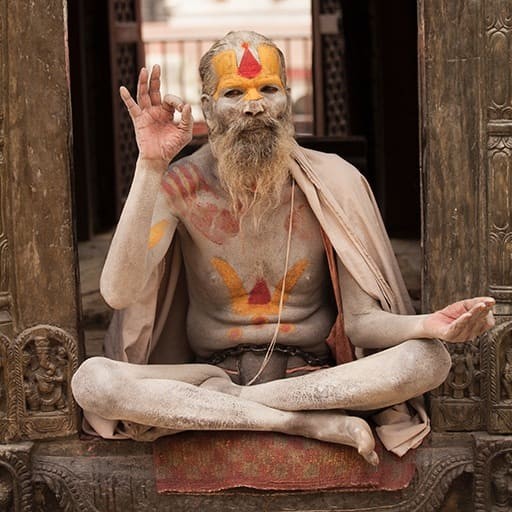
Pashupatinath
Located on the banks of the sacred Bagmati River, which is the divide between Kathmandu and the next-door city of Patan, Pashpuatinath is the most important Hindu site in the Kathmandu Valley.
As Lord Pashupati, Shiva is worshipped here from far and wide as a lingam (phallus).
On the ghats, you will likely see a cremation in progress. The ashes are being scattered into the river.
Pashupatinath is also where you'll find Sadhus (holy men), some of whom are real and some of whom are fake, making some money posing for photo's with tourists.
During the day it can be very busy with tourists here. We suggest a guided tour to Pashupatinath in the evening, when most tourists are back in Thamel and dining. Evening time is very ethereal and atmospheric, it's when the locals come to pray and there's also the daily Aarti (lamp floating) ceremony to observe.
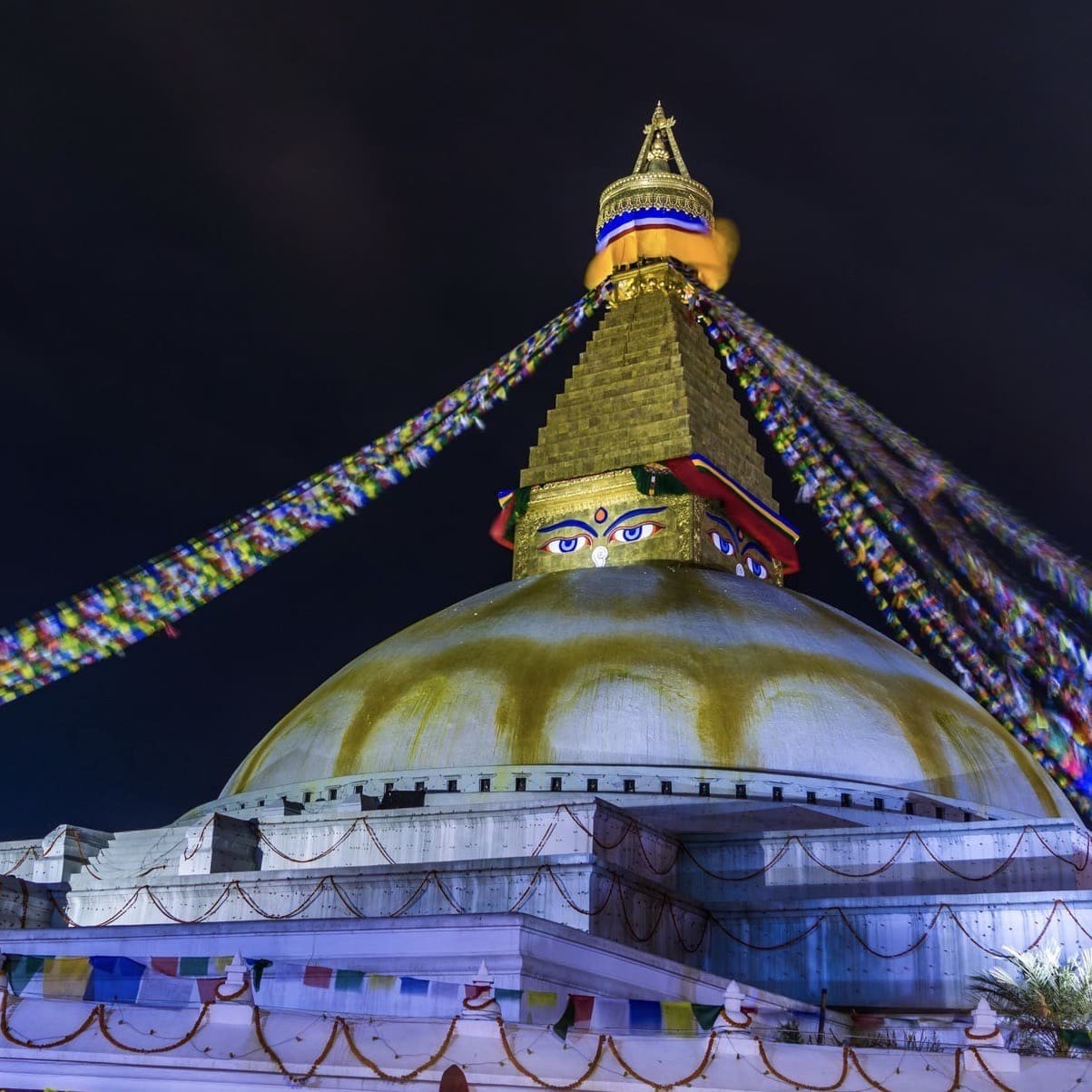
Bouddha
Also known as Bhoudha, Bouddhanath, and Bodnath, this is the largest stupa in Nepal. A truly breathtaking sight too, and one that you'll not be able to resist taking lots and lots of photo's of from every possible angle.
The immense white dome has the all-seeing eyes of the primordial Buddha on all four sides of the tower structure, which is set on concentric, ascending terraces in the mandala pattern.
Around the base are prayer wheels and images of Buddhist deities. The local area is home to thousands of Tibetan refugees, who come here to perform the kora. Their ritual was a clockwise circuit of the stupa. Late afternoon is a good time to observe this, and for the best views, head up to the balcony of an overlooking cafe.
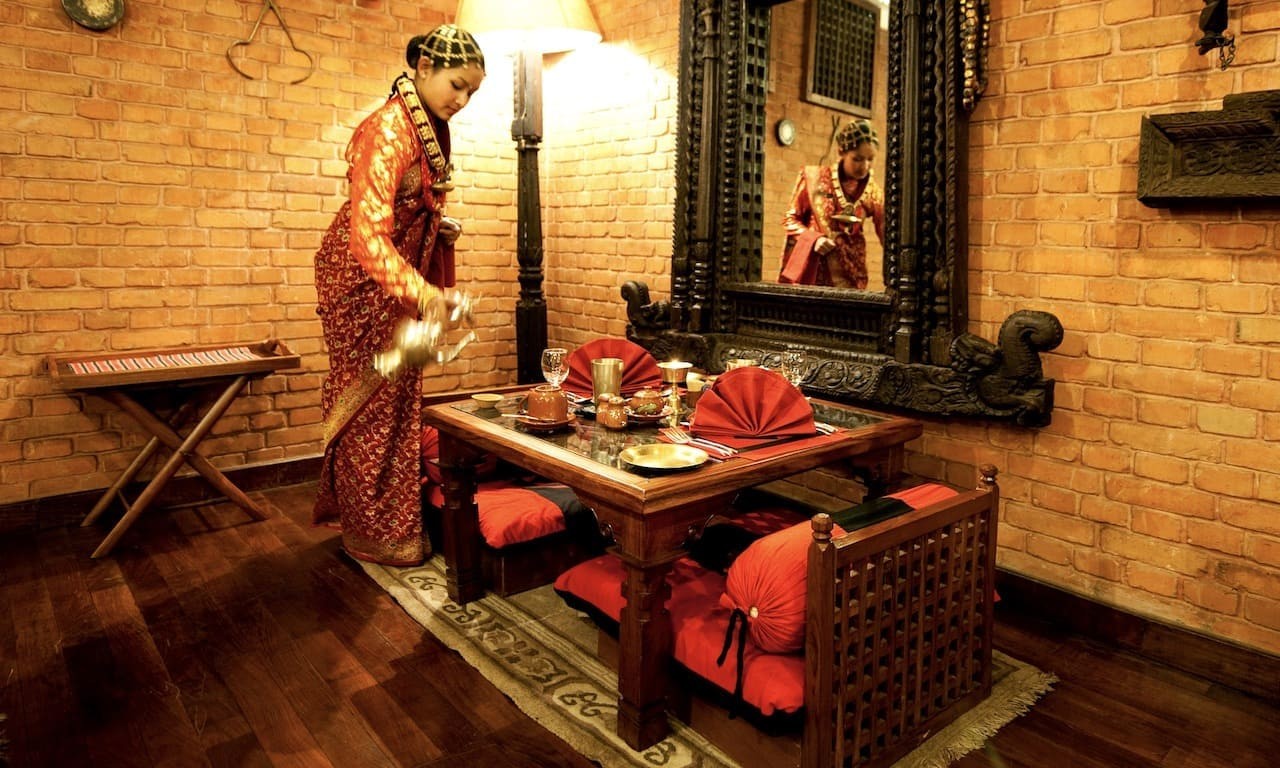
See our hand-picked Kathmandu Accommodation for suggestions as to where to stay.
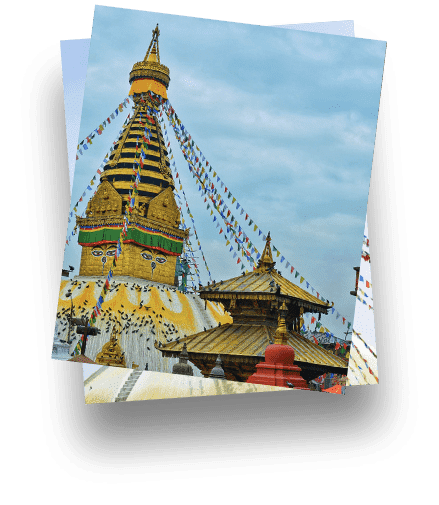
Read our Nepal Travel Guide

All rights reserved. Snow Cat Travel is a Registered Trade Mark UK 00003289264


